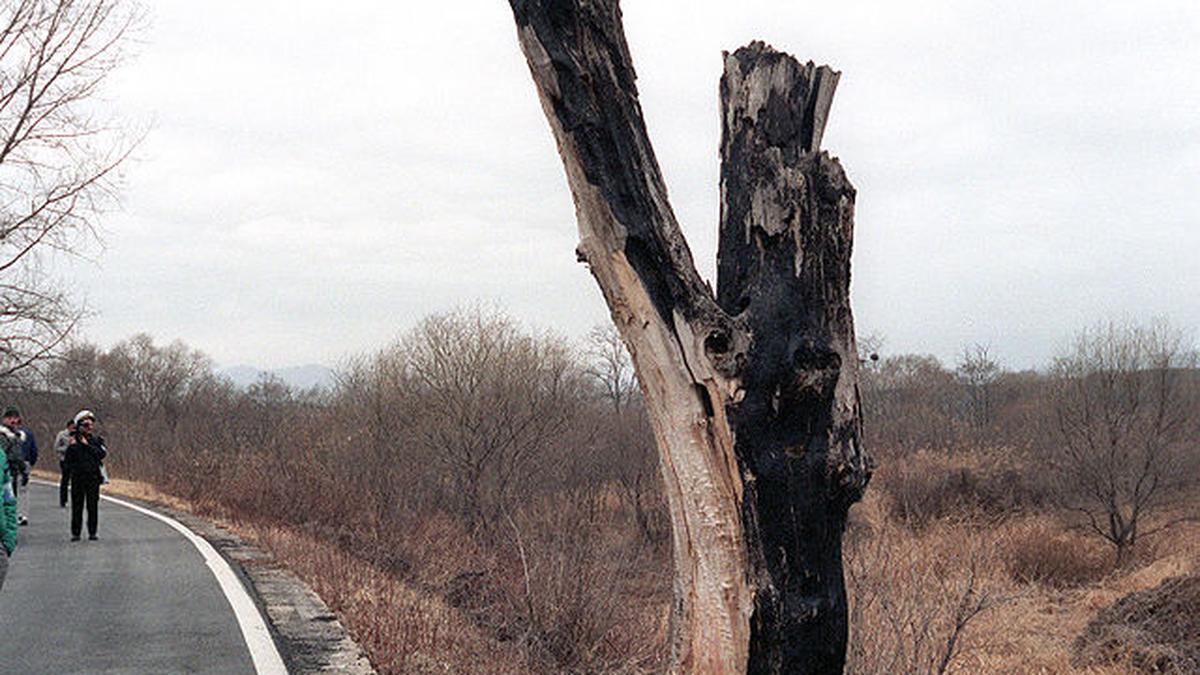
Operation Paul Bunyan: When a tree sparked a military standoff
The Hindu
Operation Paul Bunyan: A bizarre Cold War standoff over a tree in the Korean DMZ nearly sparked conflict.
In the summer of 1976, a simple poplar tree standing in the Korean Demilitarized Zone (DMZ) became the unlikely catalyst for one of the tensest military escalations between the United States and North Korea. What began as routine tree-trimming quickly spiralled into a dangerous confrontation that nearly ignited a new conflict on the Korean Peninsula. The tree, which obscured visibility at a key checkpoint, would soon thrust the world into a bizarre standoff, forever remembered as Operation Paul Bunyan.
The Korean Demilitarized Zone (DMZ), established after the Korean War in 1953, was a narrow strip of land dividing North and South Korea. Despite its name, the DMZ was one of the most heavily militarised borders in the world. During the Cold War, it symbolised the bitter rivalry between communist North Korea, backed by the Soviet Union and China, and the U.S.-allied South Korea. The fragile peace was constantly tested by military posturing, skirmishes, and espionage, with soldiers from both sides stationed just metres apart, ever-ready for conflict. In this tense atmosphere, even the smallest incident could risk escalating into war.
On August 18, 1976, a seemingly ordinary task took a fatal turn in the DMZ. At Checkpoint 3, a critical outpost in the Joint Security Area (JSA), a large poplar tree had grown so tall that it obstructed the view of U.S. and South Korean forces, compromising their line of sight to the Bridge of No Return, a key strategic route between North and South Korea. To restore visibility, a group of U.S. and South Korean soldiers, led by Captain Arthur Bonifas and Lieutenant Mark Barrett, were sent to trim the tree.
Armed only with axes, they began their task, unaware of the impending danger. As they worked, North Korean soldiers appeared, led by Senior Lieutenant Pak Chul, who aggressively demanded the operation stop, claiming the tree had symbolic significance. Tensions escalated rapidly, and without warning, the North Korean soldiers launched a violent attack. Captain Bonifas was killed on the spot, and Lieutenant Barrett, gravely wounded, later succumbed to his injuries.
This killing of two U.S. officers shocked the world, turning a simple tree-trimming operation into a deadly international crisis that brought the U.S. and North Korea to the brink of war.
In the wake of these killings, the United States responded with a show of overwhelming force in an operation that was as symbolic as it was absurd: Operation Paul Bunyan. On August 21, 1976, just three days after the deadly incident, the U.S. launched an elaborate military operation—not to attack North Korea, but to chop down the infamous poplar tree.
Backed by a staggering display of might, hundreds of soldiers, supported by tanks, fighter jets, attack helicopters, and B-52 bombers, returned to the site. The U.S. military assembled an overwhelming force of over 300 troops. The mission: to fell the tree that had triggered the crisis. The tree was cut down without resistance from the North Koreans, who watched in silence from their positions.





















 Run 3 Space | Play Space Running Game
Run 3 Space | Play Space Running Game Traffic Jam 3D | Online Racing Game
Traffic Jam 3D | Online Racing Game Duck Hunt | Play Old Classic Game
Duck Hunt | Play Old Classic Game











